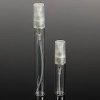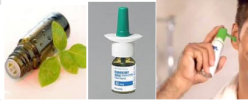Divide By Zero said:
Never put pure lugols into any bottle that has metal. Even a tiny bit of the iodine crystal discolored my tiny spoon and it wasn't wet! That's how strong iodine (the element- not iodide) is to finding electrons to strip off atoms. Plastic depends on the plastic, but I avoid that!
....
It leaches gold down too. It can be used in gold mining operations if you can disregard the Lugols price. Cyanide or mercury gold separation is more cost effective.
[quote author=http://www.sciencemadness.org/talk/viewthread.php?tid=21769]
...
Interestingly, the reaction of iodine upon gold is reversible:
Action of Iodine on Gold.
At ordinary temperatures pure dry iodine is without action on gold ; between 50° C. and the melting point of iodine combination takes place with the formation of amorphous iodide; above that temperature crystalline aurous iodide is formed. The direct reaction is always limited by the inverse decomposition of the iodide formed, but in the presence of excess of iodide pure aurous iodide may be obtained; this in excess is then best removed by subliming the mixture at a temperature of 30° ... In the presence of water, gold and iodine react in a closed vessel to form aurous iodide, but the reaction is limited, and, at normal temperatures, if the iodine can escape, the iodide is entirely decomposed. — F. Meyer (Comptes rend., 1904, 139, 733).
Pharmaceutical journal; A weekly record of pharmacy and allied sciences, Volume LXXIV, Great Britain, 1905
For more information about the chemistry of iodine and gold, see "Hand-book of chemistry", Leopold Gmelin, Volume 6, p211
One of the more obscure ways to reduce gold(III) chloride back to elemental gold is to use an alkaline solution of hydrogen peroxide. Although usually oxidizer, in some reactions H2O2 can act as a reducing agent.
(2)AuCl4[-] + (3)H2O2 + (6)OH[-] --> (2)Au + (8)Cl[-] + (6)H2O + (3)O2
The gold from this reaction usually separates out in a finely divided state, and appears brown by reflected light and greenish blue by transmitted light. If very dilute solutions are used, the gold sometimes separates out forming a yellowish film on the sides of the test tube.
...
[/quote]
[quote author=http://goldrefiningforum.com/~goldrefi/phpBB3/viewtopic.php?t=127]
...
Iodine leach goes to work immediately on Gold, then Platinums, then Silver, in that
order. It tends to ignore the other "Trash" metals. Naturally, it is about PH 4-5,
and is kept there, especially in the presence of Alkali metals, by adding small amounts of HCL acid.
Typically 24-48 hours to collect fine gold.
The leach will only stop working when the PH rises to 7.
Mix everything together in your container, making sure you have fresh air circulation, as confined
Iodine fumes can be toxic, and burn your eyes. For agitation, you can add a small air bubbler with
stone at the bottom of the leach tank, like
those used in aquariums, to keep the mixture circulating.
...
[/quote]
YT video (one of many):
https://www.youtube.com/watch?v=42CM7SO2nxQ


